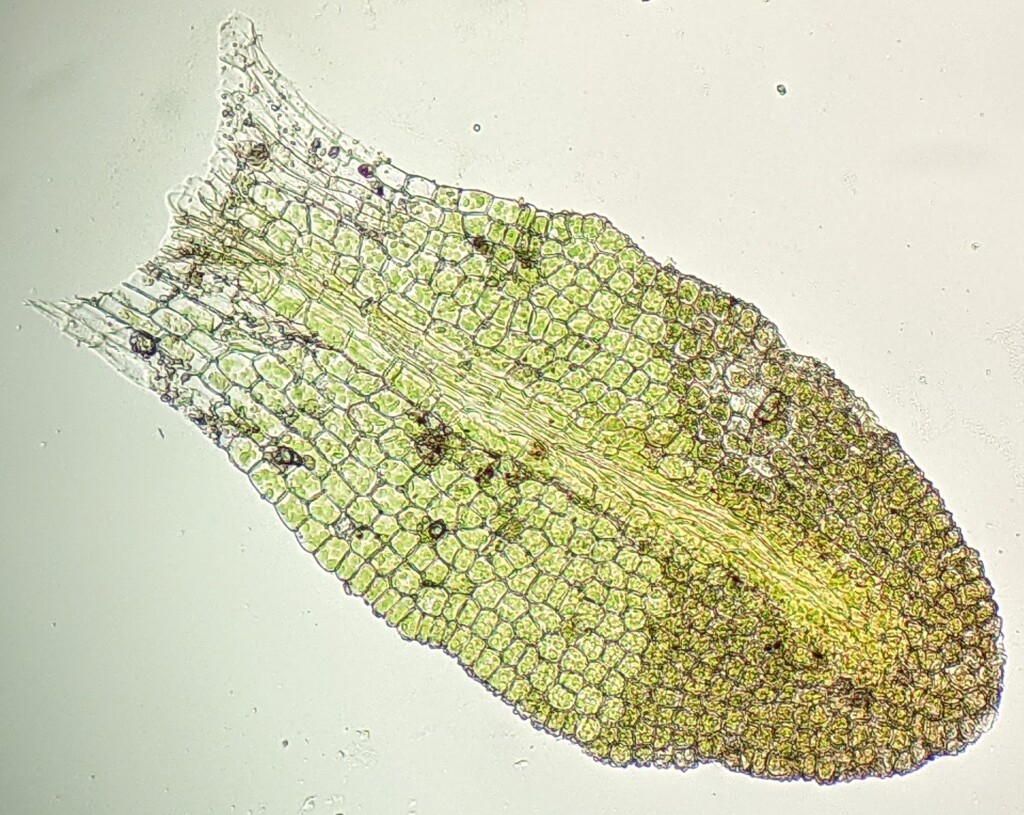Encalypta robbinsii
(Sainsbury) Brinda, Ignatov & FedosovMonoicous. Asexual propagules absent. Plants to 3 mm tall, scattered or crowded on soil. Stems very short and fleshy, lacking a central strand. Leaves erect-spreading when moist, curled inwards slightly when dry, short-ligulate to broadly spathulate, the smallest toward base, larger leaves toward apices spathulate, ovate, lanceolate or oblanceolate, 0.3–1 mm long, 0.2–0.4 mm wide, flat or concave; apices obtuse or broadly acute, sometimes acuminate in upper leaves; costae subpercurrent, weak near base, well developed toward apices; margins entire to crenulated, plane, without a border; apical laminal cells rounded-quadrate,20–45 μm long, 15–18 μm wide, pluripapillose; basal cells 30–80 μm long, smooth. Perichaetial leaves c. 5, linear to lanceolate, to 2 mm long at maturity; costae ±filling the subula. Setae 0.2–0.4 mm long. Capsules cleistocarpous, erect, globose to ellipsoid, c. 0.8 mm long, enclosed by a large epigonium; epigonium inflated, elliptic, rostrate, remaining intact at maturity.
LoM, MuM, MuF, Gold, EGU. Mostly from bare compacted sandy or gravelly loam among open woodland in the northwest. Also WA, SA, NSW and ACT. South Africa.
Previously recognised as Bryobartramia novae-valesiae but the genus Bartramia was merged with Encalypta (Ignatov et al. 2016; Ignatov & Fedosov 2018) based on phylogenetic analyses of chloroplast DNA sequences (Liu et al. 2012; Ignatov et al. 2016).
Encalypta robbinsii and the closely related E. schelpei from South Africa are unique among mosses in having a large inflated epigonium that remains intact even at maturity of the enveloped capsule (Stone 1977). The epigonium is an envelope that protects the developing sporophyte which in other mosses breaks into the vaginula that encircles the base of the seta and the calyptra that becomes elevated on top of the capsule upon expansion of the sporophyte (Stone 1977). It is glossy and cream or whitish.
 Spinning
SpinningIgnatov, M.S.; Fedosov, V.E. (2018). A new name in Encalypta (Bryophyta). Arctoa 27: 226.
Ignatov, M.S.; Fedosov, V.E.; Fedorova, A.V.; Ignatova, E.A. (2016). On the systematic position of Discelium (Bryophyta). Arctoa 25: 278–284.
Liu, Y.; Budke, J.M.; Goffinet, B. (2012). Phylogenetic inference rejects sporophyte based classification of the Funariaceae (Bryophyta): rapid radiation suggests rampant homoplasy in sporophyte evolution. Molecular Phylogenetics and Evolution 62: 130–145.
Stone, I.G. (1977). Some morphological and anatomical features of the monotypic genus Bryobartramia Sainsbury (Musci). Australian Journal of Botany 25: 141–157.
